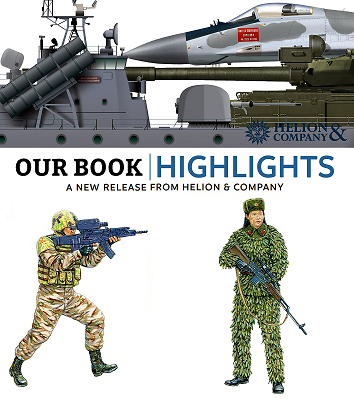By Stijn Mitzer and Joost Oliemans
On display alongside a host of well-known UAV designs at Teknofest 2021 there was a UAV that looks as intriguing as it does unconventional. The object that combined these two feats is the Alpkuş, a small UAV that was designed by Turkish engineer Alper Sarısan. The Alpkuş originally started its life as a simple copy of the Colomban Cri-Cri homebuilt recreational aircraft, which has the curious distinction of being the smallest twin-engined manned aircraft in the world. Somewhere during the past several years, Alper Sarısan converted his Cri-Cri for unmanned operations, adding it to a growing list of UAV designs to come from the country.
The Alpkuş UAV made its debut at Teknofest 2021 as the world's first UAV assembled on the terrace of a house, which arguably already is an achievement in and of itself. [1] Rather than being fitted with bombs or missiles under its wings, the Alpkuş is intended to be used for a number of civilian purposes that include agricultural tasks such as monitoring crop growth and wildfire management. The design is scheduled to undergo its first test flight in the near future, which will finally put the homebuilt UAV-converted aircraft design to the test. [1]
While aimed at the civilian market rather than the military, there already exist a number of UAV designs in service with Turkey's emergency services or currently under development by major companies for the same purposes. Thus, the continued development of the Alpkuş likely relies on an investor that shares Sarısan's vision. Whether there is space for another drone design in an already saturated market is uncertain, but its low acquisition cost could end up as its main selling point. Conversely, its twin-engined configuration and bulky fuselage might lead to higher operating costs than single-engined designs in the same class.
Specifications:
Speed: 150km/h/ 92mph / 80 knots [2]
Operational Altitude: 4500m / 15.000 feet
Endurance: Up to ~11 hours (depending on flight profile)
Wing Span: 5 metres
Length: 4 metres
Max Takeoff Weight: 160kg
Payload Capacity: Up to 50kg (consisting of an EO/IR sensor installed under its nose)
Wing Span: 5 metres
Length: 4 metres
Max Takeoff Weight: 160kg
Payload Capacity: Up to 50kg (consisting of an EO/IR sensor installed under its nose)
Alper Sarısan reportedly became interested in the design of the Colomban Cri-Cri while he was recovering at home from injuries suffered during the 2016 Turkish coup d'état attempt. [3] Where others would simply continue dreaming, Sarısan's dreams took flight and he subsequently commenced building a copy of the Cri-Cri on the terrace of his house. Stating that he had covered all costs by himself, some 70 percent of the plane's construction was finished before its conversion to a UAV. [3] The DIY nature of both projects is clearly evident by the aluminum panels still with the factory inscription on them that form the exterior structure of the design.
| Image may be NSFW. Clik here to view.  |
A Colomban Cri-cri in-flight. |
Although the Alpkuş is unlikely to see service in its current configuration, the project if anything is testament to personal ingenuity and the possibility of achieving one's dreams. Of course, personal ambition and especially funding only go so far, and its display on Teknofest is perhaps the most crucial point of its short career, constituting the most realistic chance of securing funding for continued development. Having yet to conduct its first flight test, potential investors will surely be awaiting initial success first however. Nonetheless, Turkey currently is one of very few countries in the world that actively supports such projects, allowing its technology base and arms industry to grow to the ascending giant it is today. Such investments may come associated with risks, but it precisely the acceptance of such risksthat in the past have paid off for the country on this front.
[1] July 15 Veteran exhibits the plane he built on the terrace of his house at TEKNOFEST https://www.sabah.com.tr/yasam/2021/09/25/15-temmuz-gazisi-evinin-terasinda-yaptigi-ucagi-teknofest-te-sergiliyor
[3] 15 Temmuz gazisi evinin balkonunda kendi uçağını yapıyor https://www.bursadabugun.com/haber/15-temmuz-gazisi-evinin-balkonunda-kendi-ucagini-yapiyor-1175458.html
From Nu.D.40 to Bayraktar Akıncı: Demirağ’s Legacy
Recommended Articles:





